ASUS Gaming Smartphone: 11mm-style ROG Phone with Speed-Binned Snapdragon 845
by Ian Cutress on June 4, 2018 7:35 AM EST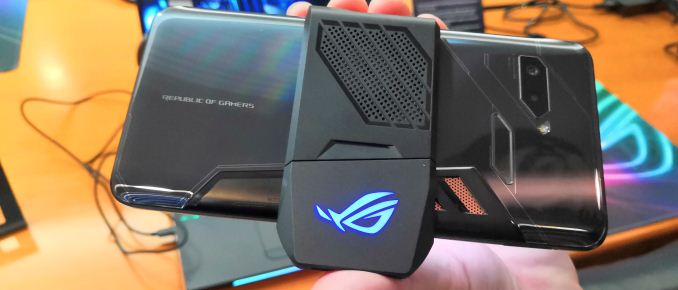
ASUS producing a gaming smartphone is one of the more esoteric news stories at the Computex 2018 trade show this year. To fire a shot right across the bow of Razer, ASUS is putting its ROG credentials on display: a speed-binned Snapdragon 845 running at a higher frequency than the standard S845 smartphones, a higher-than-standard 90 Hz refresh rate display with 1ms response time and 108% DCI-P3 gamut, programmable ultrasonic AirTrigger sensors, force feedback, and additional docks for purchase. One of the key elements is that ASUS built this phone with an 11mm thickness, well beyond the 7-8mm we see on flagship smartphones today. They have put that additional volume to incredible use for extra battery, more haptics, bigger speakers, more connectivity, and it's a showcase of what we could see if other smartphone manufacturers offered a bit extra z-height.
The 6-inch 2160x1080 AMOLED display is paired with the high-performance Snapdragon 845 SoC, 8GB DRAM, 128GB and 512GB of UFS 2.1 storage, along with a 4000 mAh battery, 20W ASUS Hyper Charge, support for 24-bit audio, and Corning Gorilla glass. One of ASUS’s key marketing points is the use of ASUS Aura RGB lighting, with the company stating that this is one of the first phones (if not the first) to fully exploit RGB in this way.

Comparing the size of the LG V30 (left) and ROG phone (right). It's big
For control, ASUS will be adding three ultrasonic air touch sensors – two shoulder triggers being the main ones. These are designed to be fully programmable and are more sensitive with haptic feedback.
With the AeroActive cooler, which is bundled with the phone, aside from an additional fan to help cool the phone and sweaty fingers, it provides an extra USB Type-C connector which is side mounted for direct charging, HDMI output, Gigabit Ethernet, and headphones.
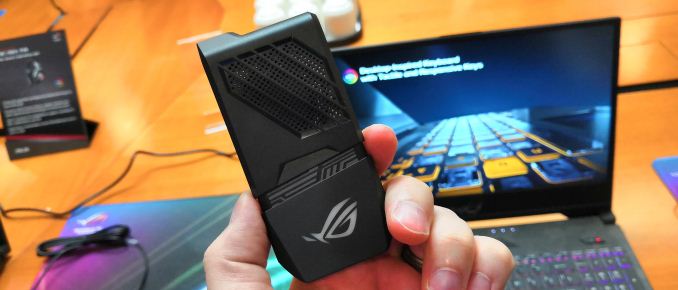
Bundled AeroActive Cooler, attaches to side port
ASUS will be offering the ROG Phone with a series of accessories, including a TwinView Dock to convert the machine into a dual-screen hand-held console. The Dock also offers front-facing quad-speakers, two extra physical trigger buttons, better haptic feedback, an enhanced cooling system, and a 6000 mAh extended battery back.
The Mobile Desktop Dock, another accessory, allows the phone to be connected to a 4K monitor, mouse, keyboard, and wired gigabit networking.
The Gamevice controller and the WiGig dock, also to be available, focuses on 802.11ad wireless display connections as well as a dual analog stick gaming – like a console
| ASUS ROG Phone | |||
| Processor | World’s fastest, speed-binned 2.96Ghz octa-core Qualcomm® Snapdragon™ 845 Mobile Platform |
||
| GPU | Qualcomm® Adreno™ 630 | ||
| UI | ROG Gaming UI | ||
| Display | 6.0“ 18:9 (2160x1080) AMOLED 90Hz refresh rate with 1ms pixel response time 108.6% DCI-P3 color gamut 10000:1 contrast ratio Capacitive touchscreen with 10-point multi-touch (supports Glove Touch) Discrete image processing chip support HDR display – gaming, video & images |
||
| Dimensions | 158.8 x 76.2 x 8.6mm | ||
| Weight | 200g | ||
| Battery | 4,000mAh | ||
| Memory | LPDDR4 8GB RAM | ||
| Storage | UFS 2.1, 128GB / 512GB | ||
| Sensors | Accelerometer, e-compass, proximity sensor, Hall sensor, ambient-light sensor, fingerprint sensor, gyroscope, 2 x ultrasonic AirTrigger sensors | ||
| Wireless connectivity | 802.11a/b/g/n/ac/ad 2x2 MIMO; Wi-Fi Direct and Wi-Fi Certified WiGig® 802.11ad wireless display support Bluetooth® 5.0 |
||
| GPS | Supports GPS, aGPS, Glonass, BeiDou | ||
| I/O ports | Side: Custom USB-C™ Supports USB 3.1 Gen 1 / DP 1.4 (4K) / fast charging (QC 3.0 +QC 4.0/PD 3.0) (15W) ASUS HyperCharge direct charging Bottom: USB-C™ Supports USB 2.0 / fast charging (QC3.0/PD3.0) (20W) / Direct Charge 3.5mm headphone jack |
||
| Front Camera | 8MP | ||
| Main Camera | 12MP + 8MP (120° wide-angle) | ||
| Voice Wakeup | Yes | ||
| Speakers | Dual front-facing stereo speakers with smart amplifier 24-bit/192KHz Hi-Res Audio DTS Headphone:X™ 7.1 virtual surround-sound Qualcomm® aptX™ High-definition Bluetooth® wireless audio |
||
| NFC | Supported | ||
More information as we get it at the show, hopefully with some hands on.
| Want to keep up to date with all of our Computex 2018 Coverage? | ||||||
 Laptops |
 Hardware |
 Chips |
||||
| Follow AnandTech's breaking news here! | ||||||


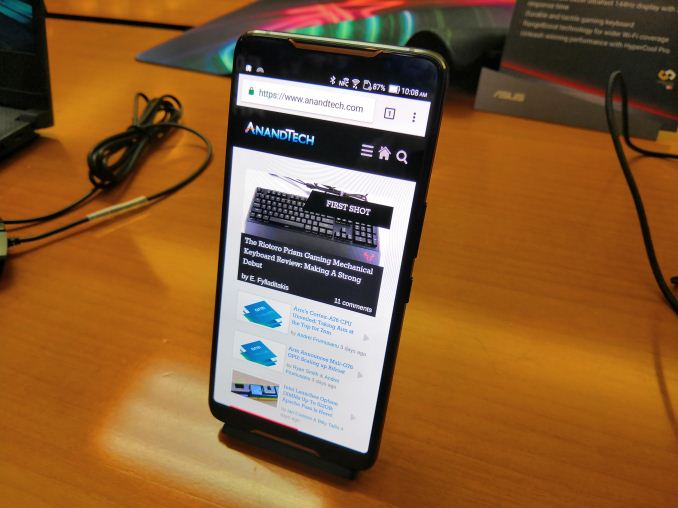
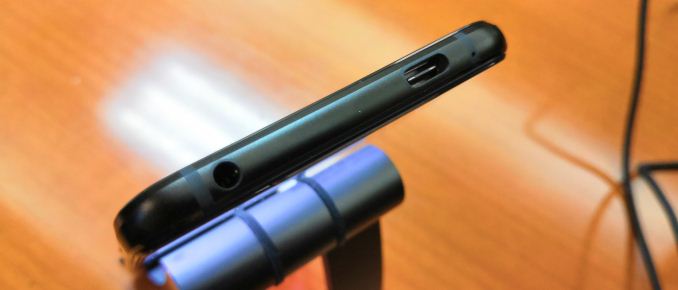
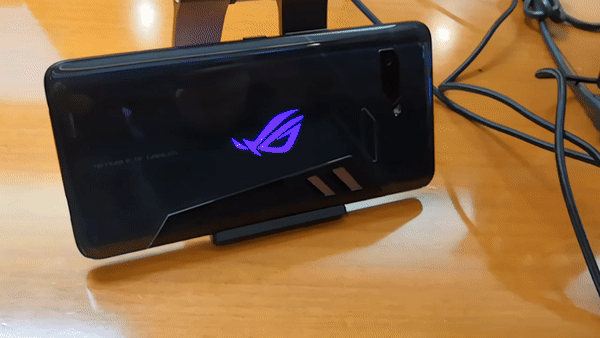
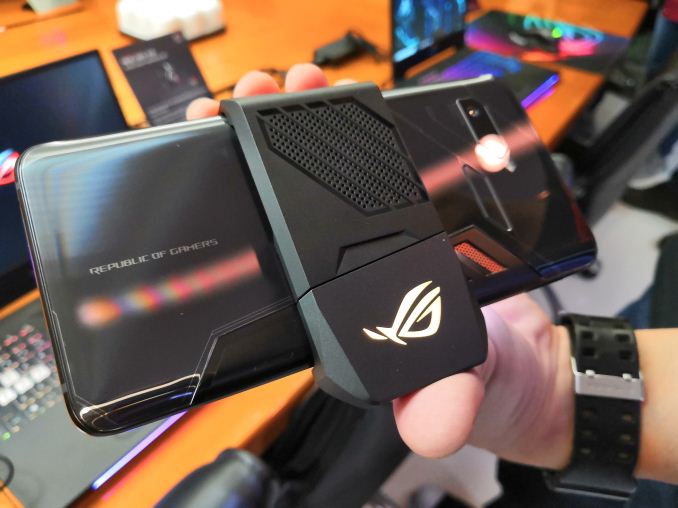
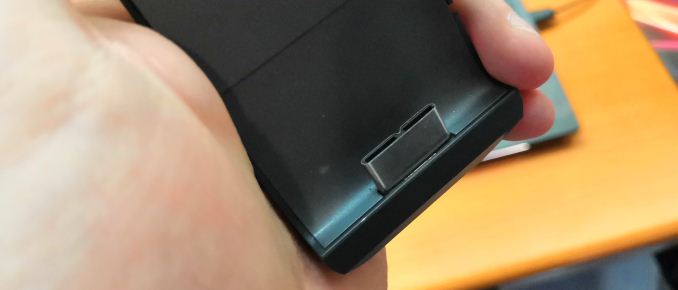
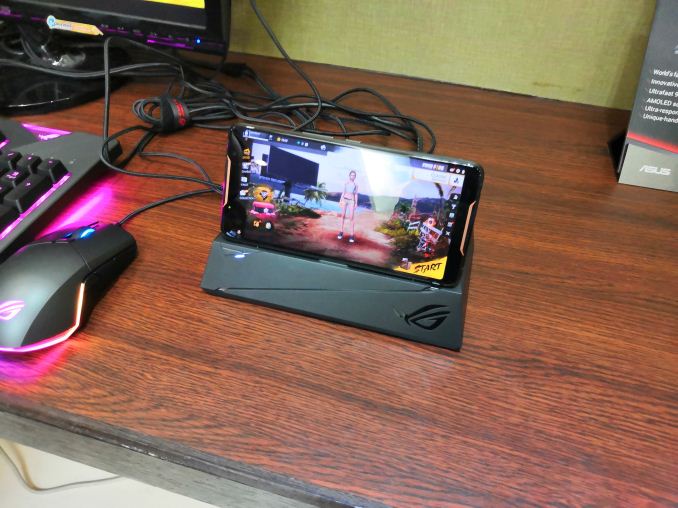

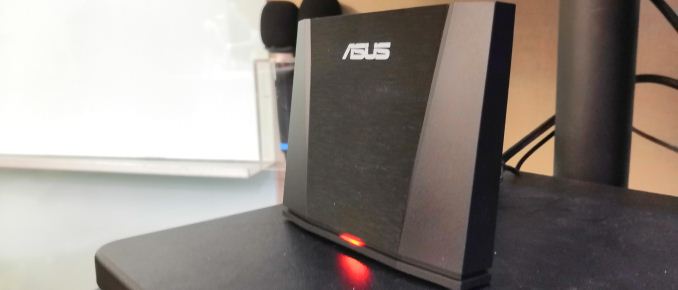
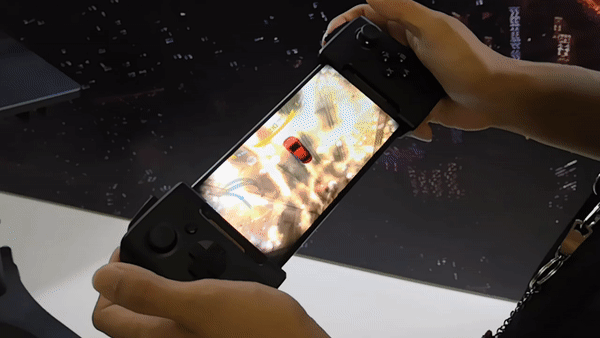








83 Comments
View All Comments
ZeDestructor - Tuesday, June 5, 2018 - link
With pentile, you still get full luma (brightness) information for the full resolution and only lose 1/3rd the chroma (colour) information.In practice, it means that it just doesn't matter all that much since most things are 2px wide or larger at their smallest dimension (at 400ppi or better anyways). Compare your screen at RGB/4:4:4 to 4:4:0 or 4:2:2 to get an idea of what a little bit of chroma subsampling looks like (hint: not all that much on a 4K or better display). FWIW, UHD and HD BR are 4:2:0 subsampled (equivalent to a 4:1 downscale) and nobody bats an eye.
What IS a problem though is fringing at hard edges, like high contrast text, but pixel density helps there. at 250-300ppi, I find it visible, but livable. At 400-567ppi, I find it to be nonexistent unless I go pixel-peeping. Between 400ppi (my OP5 I look at every day), 515ppi (my 950XL I toy with), 522ppi (SGS Note88), 530ppi (SGS S8+/9+) and 567ppi (SGS 8/9) pentiles, I simply don't see any difference outside of pixel peeping.
I also have a slightly denser 5.2" 1080p 424ppi RGB LCD panel in my old Xperia XZ to compare to, and that is no better at resolution in every day use, and is quite far behind compared to my OP5 for colour quality.
ZeDestructor - Monday, June 4, 2018 - link
As a current owner of a 400ppi pentile OLED display (OnePlus 5), it's fine. Not quite the niceness of 550ppi (got that on my 950XL), but it's near enough to 400ppi proper RGB LCDs during most uses that I really don't mind it at all.Dr. Swag - Monday, June 4, 2018 - link
This is a device that's probably going to be quite expensive though... I don't think it's something that you should have to compromise when paying so much.Retycint - Monday, June 4, 2018 - link
Which is kind of ironic, because you would be compromising on battery life and performance if this had a higher-res screen. Sure, other flagship phones does just fine with a quadHD/2K display, but I'm sure the target audience of this phone would rather have 3 extra hours of SOT or higher fps than a slightly higher PPI screen that provides minimal visual benefit in games. You also have to remember that this is a 90Hz screen, which means that it's a choice between 1080p90 and 2K60. I'm sure gamers would choose the formerZeDestructor - Tuesday, June 5, 2018 - link
For far eastern nations, with their tiny, fiddly scripts, there's simply no point going to anything under 700-800ppi on a phone, so may as well have 1080p and get better battery life and framerates while at it.Incidentally, I suspect the 90Hz is the real reason for not going 2880x1440: the current generation of mobile OLED display controllers only go so high (2960x1440 60Hz, what Samsung's and Synaptics' top controllers can do). To get 90Hz, you'd have to go to the age-old technique of dropping resolution and then raising refresh, which seems to be exactly what has been done here.
serendip - Tuesday, June 5, 2018 - link
Don't quite agree there, I can read simplified and traditional Chinese scripts fine on a phone with a 340 ppi LCD. What matters is size (that's what she said too) - a larger screen can render East Asian scripts in physically larger sizes while still showing a lot of content onscreen.ZeDestructor - Thursday, June 7, 2018 - link
It's readable, but looks terrible. I mean, western/latin scripts are perfectly readable at 100ppi, but man do they look terrible.At desktop/laptop/tablet view distances, I reckon 300ppi and 600ppi are the edge of meaningful improvements for western and eastern scripts respectively (400ppi and 800ppi for phones, repectively), and consequently that's where the push for ever-higher pixel density will stop.
zodiacfml - Monday, June 4, 2018 - link
I suggested this as a question to the Zenfone manager in a Q and A here in Anandtech, if they have plans for an RoG phone and it was negative. This was during the time of the SD800 where I was impressed with its performance but bad for thin and light phones.I thought I will never be impressed with smartphone these days but this phone is just crazy. It includes 802.11ad and I'm not sure if that feature is available in 2018 laptops. Good job on choosing OLED as it more power efficient in games, better image quality with a decent 90Hz refresh.
Two type-C USB ports? Anyone? Just crazy! I suggested this in GSMarena where I got the idea when dual cameras were becoming a norm last year. It started with me suggesting dual speakers, dual card slots, then the dual ports.
The accessories are crazy too. Who would thought ASUS will take this seriously, I guess they got the idea from games attaching keyboards,mice to smartphones
Downside to all of these will be the price. No doubt in my mind this will be more expensive than the SD845 phones this year, pushing this out of reach for many gamers including myself
Stuka87 - Monday, June 4, 2018 - link
I think I will stick with my Switch. Roughly the same size, cost *WAY* less, and I get proper console quality games.Manch - Monday, June 4, 2018 - link
I think that will be the crux of it. The Switch is a dedicated platform specifically for games. There's some QC to the library and its a lot more curated compared to play store. Where as this is a game oriented android phone with peripherals you can buy, to play games on. Maybe ASUS will pursue a console like experience for it.